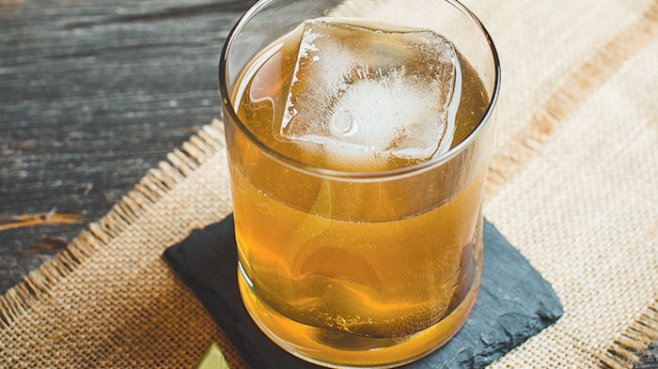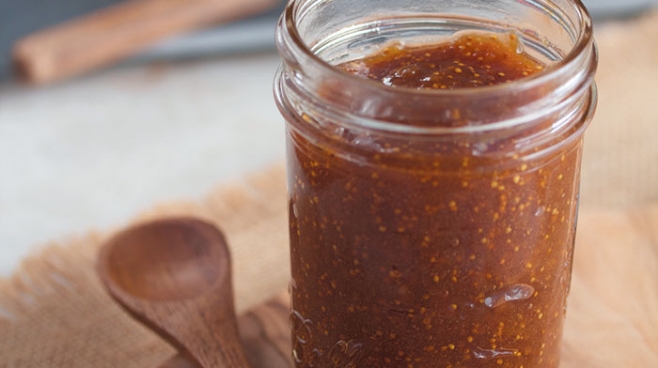Warm Up To Bourbon
Pairing a Southern Staple with Green Mountain Favorites
Picture the scene: It’s 4° outside, I’ve spent the day wearing my “outside” scarf while inside and the sun went down (I swear) shortly after lunchtime. It’s clearly time to call it a day and unwind a bit before tackling the “what’s for dinner” question.
At this chilly time of year, my thoughts turn dark—at least when it comes to my evening libation. Don’t get me wrong: Normally, I enjoy umbrella drinks as much as the next gal, but no one, and I mean no one, wants a cheery tropical-colored boat drink when it’s only 4° outside. The same way that no one, and I mean no one, wants to hear yet another duet rendition of “Baby, It’s Cold Outside,” no matter the season or artist.
Now, I don’t mean simply dark in color. If it was only a color issue, I’d drink a dark beer or sip some crisp, dry hard cider. No, in the deep of winter, when I feel certain that it may never, ever be springtime again, I need a hearty winter sipper, something that warms from the inside out, something that liberates me from my “outside” scarf.
I drink bourbon.
And not only because I enjoy a well-made Manhattan or classic whiskey sour. Bourbon has an earthy, smoky-oaky flavor and aroma that, for me, is like capturing the essence of winter in a glass. It’s the comforting feeling I get while warming my cold fingers and toes in front of a toasty fire after a day spent schussing down the slopes—but in a highly drinkable form. The same oakiness that I despise in Chardonnay in summer is somehow just right in a glass of bourbon in winter.
Bourbon comes honestly by its mellow smokiness. After being distilled from fermented corn mash, this uniquely American whiskey—a 1964 Congressional resolution declared bourbon an indigenous product of the United States—is aged in new-but-charred white oak barrels that develop its smoky flavor characteristics and dark amber color. Bourbon distilleries are so serious about this barrel business that none ever uses a barrel twice; if the barrel were to be reused, the resulting liquor would not be bourbon, only plain whiskey.
Yes, there are rules for producing true bourbon. Quite a few rules, in fact, including the rule that for bourbon to be called “straight,” it must be aged for a minimum of two years. Or the rule that forbids adding anything other than water (other additives make it “blended bourbon”). And, while there’s not an official rule making it so, bourbon is largely a Southern product: 95% of the world’s bourbon is produced in Kentucky, although, as with beer and other spirits, regional craft distillers of blended varieties are popping up nationwide.
Therefore, with so many rules as to how and where bourbon becomes bourbon, what’s a straight-bourbon-loving dedicated locavore to do, short of relocating to Kentucky? Don’t call the movers just yet. Instead, try combining bourbon with local Vermont specialties in two tasty ways to create a North-meets-South, North-loves-South relationship.
The first, a variation on the classic Moscow Mule, pairs smoky bourbon with sweet Vermont maple syrup, spicy ginger beer and a bright splash of lime. Maple syrup is ideal for this bourbon cocktail because it is essentially an all-natural simple syrup; it’s as if nature—and by “nature” I mean “the folks down the road at the sugar house”—knew that I can’t stand fussy cocktails and created a perfect cocktail mixer just for me.
The second is a sweet dried fig and bourbon jam, the perfect addition to a charcuterie platter arrayed with both hard and soft Vermont cheeses. Bourbon and dried fruits are a match made in heaven—which is probably why fruitcake is often soaking in it. But don’t stand on ceremony with this jam or save it for after 5pm because of the bourbon: You’ll swoon over a spoonful swirled into your morning yogurt or slathered on some freshly toasted bread.
When the days and your mood turn dark, do as I and our neighbors to the South do: Ditch the “outside” scarf and add some warming bourbon to the menu.






